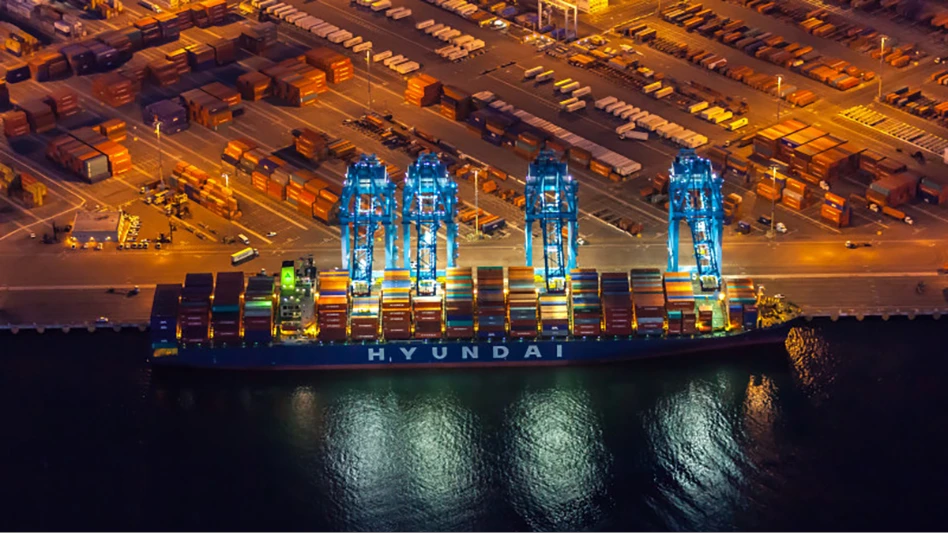
Photo courtesy of USMX and Hyundai HMM
In the United States, recyclers and global traders of recycled materials are watching how the International Longshoremen’s Association (ILA) and the United States Maritime Alliance (USMX) will react at the conclusion of an agreed upon pause to a strike. That pause, affecting operations at about three dozen ports in the eastern and southern U.S., is scheduled to end Jan. 15, 2025.
In an early December essay written by ILA Executive Vice President Dennis A. Dagget, he points the finger squarely at port material handling automation as the most contentious issue brewing between the union and USMX, both based in New Jersey.
RELATED: ILA, USMX negotiations break down
“At the center of this impasse is the employers’ push to expand the use of semiautomated rail-mounted gantry cranes (RMGs),” Dagget says. “The reality is that 95 percent of the work performed by RMGs is fully automated. This isn’t about safety or productivity—it’s about job elimination.”
Container shipping in the past half century greatly has changed the way types of cargo are handled at ports around the world, automating processes that once required numerous people in cargo-handling roles.
"[As of 2024,] only in the last 6 feet of the container’s journey on the landside, when it is placed on a truck chassis, does an operator step in, but how long until employers automate those final 6 feet as well?” Dagget says.
In seeking a counterpoint to what USMX says is a cost-saving, energy-saving and efficient business model, Dagget points to national security.
“The automation agenda isn’t just a threat to jobs—it’s a risk to our national security and economy,” he says. “Ports rely on interconnected systems that are highly vulnerable to cyberattacks. Imagine if a foreign adversary, like China, exploited these vulnerabilities and hacked our port systems. It’s a new form of warfare that we are not prepared to defend against.”
In a response posted Dec. 3 to the USMX website, the organization says, “Port operations must evolve, and embracing modern technology is critical to this evolution.”
“A USMX terminal where modern crane technology was implemented more than a decade ago was previously limited to a 775,000-container capacity using traditional equipment. Yet, that same terminal nearly doubled its volume after incorporating the use of modern RMGs into its daily operations. The added capacity delivered an equal increase in hours worked, leading to more union jobs, as the terminal went from employing approximately 600 workers a day to nearly 1,200.”
Latest from Recycling Today
- Phoenix Technologies closes Ohio rPET facility
- EPA selects 2 governments in Pennsylvania to receive recycling, waste grants
- NWRA Florida Chapter announces 2025 Legislative Champion Awards
- Goldman Sachs Research: Copper prices to decline in 2026
- Tomra opens London RVM showroom
- Ball Corp. makes European investment
- Harbor Logistics adds business development executive
- Emerald Packaging replaces more than 1M pounds of virgin plastic





